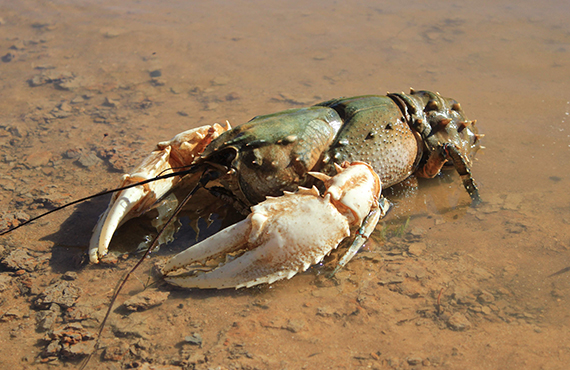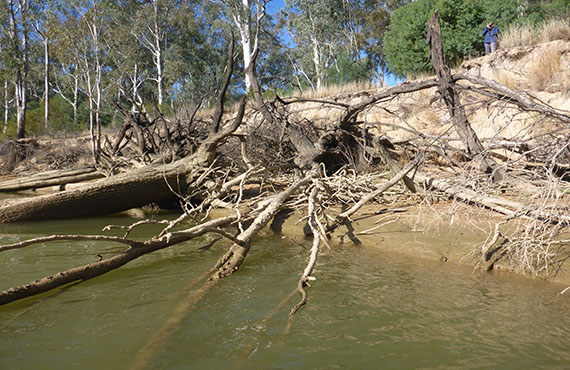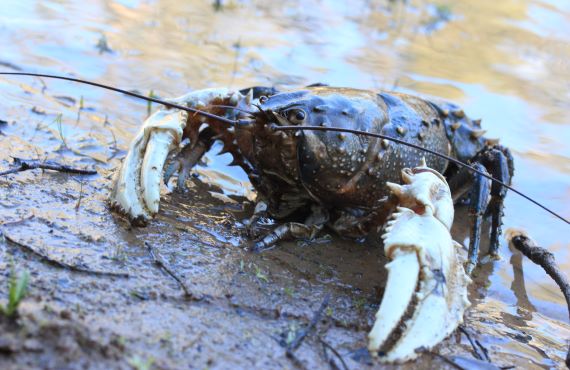
Murray Crayfish

Scientific name
Euastacus armatus
Status in NSW
Vulnerable
Characteristics
Murray Crayfish have characteristic white claws and three rows of large white spines on each side of the tail. Males generally have larger claws while females have broader abdomens. Individuals have a dark green to green-brown body.
Species similar in appearance
Other Euastacus species.
Size
The species grows to more than 150 mm in carapace length; with the maximum recorded size being 174 mm and 2.5 kg. The Murray Crayfish is the largest of over 40 species in the genus Euastacus which represents freshwater 'spiny' crayfish.
Did you know?
The Murray Crayfish is the second largest freshwater crayfish in the world!
Distribution
The Murray Crayfish is endemic to the southern tributaries of the Murray-Darling Basin. It historically occurred in New South Wales, Victoria, South Australia and Victoria but has seen significant declines throughout its range.
Habitat
Murray Crayfish prefer cool, flowing water that is well oxygenated. The species is tolerant of water temperatures up to 27°C and moderate salinities, but are intolerant to low dissolved oxygen concentrations. They create burrows that vary in complexity, from deep burrows with multiple entrances to simple burrows under a rock or log

Why is the Murray Crayfish threatened?
- Habitat modification from the construction of weirs
- River regulation which in turn alter water temperatures
- Sedimentation can fill deeper holes, smother snags and bury clay banks required for burrowing
- Historic overfishing and current illegal fishing practices remove individuals from a population
- Pollution and pesticide run off into rivers
- Extreme weather events such as flooding can create blackwater events which can be devastating to a population
- Competition with and predation by introduced species
- Local extinctions may not be naturally recolonised because of the species' inability to disperse the long distances required
More information
- Current projects on Murray Crayfish
- Fisheries Scientific Committee final determination (July 2013) (PDF, 84.04 KB)
- Primefact - Fishing for Murray Crayfish in NSW
- Primefact - Murray Crayfish - Euastacus armatus
- Priorities Action Statement - Actions for Murray Crayfish
- Murray Crayfish Ministerial Order to permit fishing 2014



